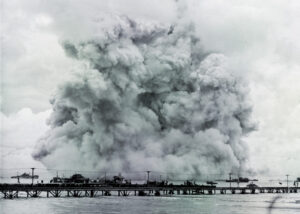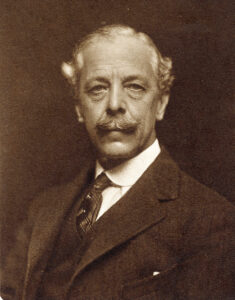A History of Ironclads
by John V. Quarstein, History Press, 2007, 284 pages, $24.99.
John Quarstein, in partnership with The Mariners’ Museum in Newport News, Va., has produced an outstanding chronology of the development of iron warships and catalogs of a significant portion of the Mariners’ Museum’s exhibits on Civil War ironclads. Quarstein, who has written hundreds of articles as well as the book CSS Virginia: Mistress of Hampton Roads, simplifies his mastery of the subject so that the reader can see the rapid development and progress made in ironclad construction before, during and after the Civil War.
This volume has something for everyone. For those unfamiliar with the Civil War on the water, it provides a good introduction. For those knowledgeable about the subject, the 130-plus illustrations and maps (most from The Mariners’ Museum and others from Quarstein’s private collection,) provide the reader a unique glimpse at the many different forms of iron warships experimented with during the war. A future hardback edition in color would be nice.
Naturally, the book’s focus is Civil War iron warships. Blockade runners, Confederate cruisers, wooden ships and underwater torpedoes and submarines go unmentioned except when they cross paths with the iron navies. For those who want a more scientific description of the change from wood to iron, Bernard Brodie’s classic Sea Power in the Machine Age provides more depth. Those desiring a deeper understanding of Monitor or Virginia might be more satisfied with Mindell’s or Roberts’ recent books on Monitor or Quarstein’s CSS Virginia.
The first quarter of the book explains how changes in propulsion, armament and armor evolved and replayed from 1200 BC until the 19th century. The ancient tactics of ramming ships in the age of oars were reborn in the CSS Virginia’s powerful ram. Changes in propulsion from independent oars to faster sails and back to independent steam determined who won and lost. In 1826 the more maneuverable British-built steamer Karteria destroyed 27 Turkish sailing ships. The value of defensive armor, which was brought back in ironclads, was demonstrated by the 1592 defeat of 800 Japanese wooden ships by 80 Korean iron-plated turtle ships.
Exploding shell guns made ironclads a necessity. Wooden ships were made obsolete at the Battle of Sinope when a Russian fleet armed with 68-pounder shell guns blew a Turkish fleet out of the water. Recognizing that exploding shells decimated wood, the English and French built iron-plated batteries to subdue Russian fortifications at Kinburn during the Crimean War, and began ironclad construction after the war. Civil War naval innovations above the water illustrated in the balance of this book center on iron, rams, shells and rifled guns.
Each chapter starts with a brief synopsis of developments, followed by a chronology of events. Some of the events are spread across days and months while some battles receive a minute-by-minute treatment. The March 1862 duel between Monitor and Virginia is covered in 16 pages. The book truly sweeps across the four years of the Civil War and explores the simultaneous efforts on both sides. This provides the reader with a sense of the large scale of mobilization.
Setting the larger context of the ironclads’ role within the war is one of many things the books does well. For example, Quarstein shows that during one month, July 1863, Union forces opened the Mississippi River by capturing Vicksburg and Port Hudson with significant help from Rear Adm. David Dixon Porter’s ironclads; Union Naval forces, including six ironclads, launched continuous attacks on Charleston; CSS North Carolina was launched at the Laird yard in England, and Union Ambassador Charles Adams threatened England with war if it was released to the Confederates; and the Union ironclad Baron DeKalb was sunk by a torpedo in the Yazoo River. This fact-filled narrative provides an outstanding naval complement to E.B. Long’s The Civil War Day by Day.
The last two chapters provide a rapid review of the evolution of warships after the Civil War and describe the fate of the monitors. John Ericsson’s idea of heavily armored turrets prevailed over Confederate and Union casemated rams, but the monitor design—with virtually no freeboard—would be abandoned for blue water ships with higher freeboards able to steam the oceans. Quarstein’s History of Ironclads is a good read and a valuable introduction to the new Monitor Center at The Mariners’ Museum.
Originally published in the August 2007 issue of Civil War Times. To subscribe, click here.




